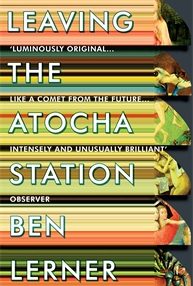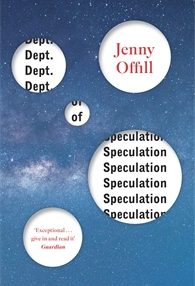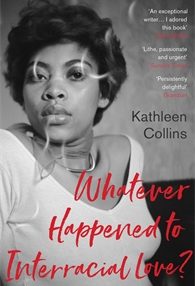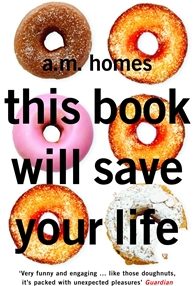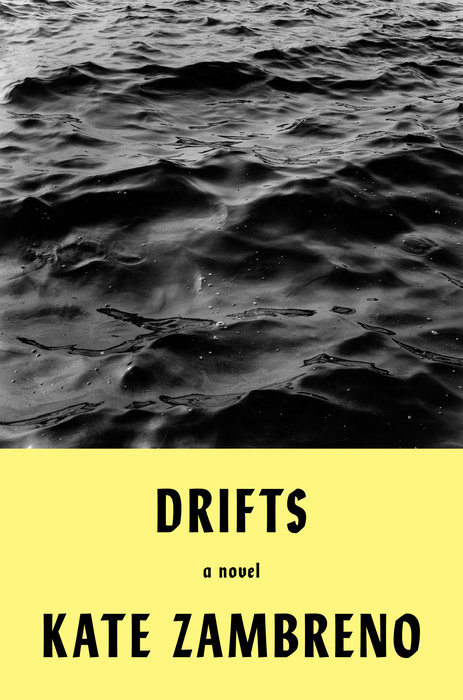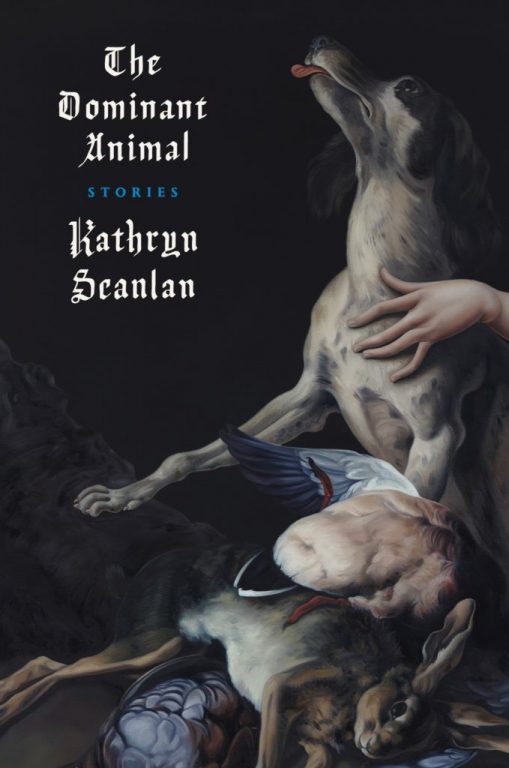In this February 1970 Writer’s Digest article, Eudora Welty argues that, “Fiction is not meant to be a disguise for propaganda. A story should speak for itself as a story.”
By Eudora Welty
Writer’s Digest, February 1970
Not too long ago I read in some respectable press that Faulkner would have to be reassessed because he was “after all, only a white Mississippian.” For this reason, it was felt, readers could no longer rely on him for knowing what he was writing about in his life’s work of novels and stories, laid in what he called “my country.”
Remembering how Faulkner for most of his life wrote in all but isolation from critical understanding, ignored impartially by North and South, with only a handful of critics in forty years who were able to “assess” him, we might smile at this journalist as at a boy let out of school. Or there may have been an instinct to smash the superior, the good, that is endurable enough to go on offering itself. But I feel in these words and other like them the agonizing of our times. I think they come of an honest and understandable zeal to allot every writer his chance to better the world or go to his grave reproached for the mess it is in. And here, it seems to me, the heart of fiction’s real reliability has been struck at—and not for the first time by the noble hand of the crusader.
It would not be surprising if the critic I quote had gained his knowledge of the South from the books of the author he repudiates. At any rate, a reply to him exists there. Full evidence as to whether any writer, alive or dead, can be believed is always at hand in one place: any page of his work. Integrity can be neither lost not concealed nor faked nor quenched nor artificially come by nor outlived, nor, I believe in the long run, denied. Integrity is no greater and no less today than it was yesterday and will be tomorrow. It stands outside time.
The novelist and the crusader who writes both have their own place—in the novel and the editorial respectively, equally valid whether or not the two happen to be in agreement. In my own view, writing fiction places the novelist and the crusader on opposite sides. But they are not the sides of right and wrong. Honesty is not at stake here and is not questioned; the only thing at stake is the proper use of words for the proper ends. And a mighty thing it is.
Because the printed page is where the writer’s work is to be seen, it may be natural for people who do not normally read fiction to confuse novels with journalism or speeches. The very using of words has these well-intentioned people confused about the novelist’s purpose.
The writing of a novel is taking life as it already exists, not to report it but to make an object, toward the end that the finished work might contain this life inside it, and offer it to the reader. The essence will not be, of course, the same thing as the raw material: it is not even of the same family of things. The novel is something that never was before and will not be again. For the mind of one person, its writer, is in it too. What distinguishes it above all from the raw material, and what distinguishes it from journalism, is that inherent in the novel is the possibility of a shared act of the imagination between its writer and its reader.
“All right, Eudora Welty, what are you going to do about it? Sit down there with your mouth shut?”, asked a stranger over long distance in one of the midnight calls that I suppose have waked most writers in the South from time to time. It is part of the same questions. Are fiction writers on call to be crusaders? For us in the South who are fiction writers, is writing a novel something we can do about it?
It can be said at once, I should think, that we are all agreed upon the most important point: that morality as shown through human relationships is the whole heart of fiction, and the serious writer has never lived who dealt with anything else.

And yet, the zeal to reform, which quite properly inspires the editorial, has never done fiction much good. The exception occurs when it can rise to the intensity of satire, where it finds a better home in the poem or the drama. Large helpings of naïveté and self-esteem, which serve to refresh the crusader, only encumber the novelist. How unfair it is that when a novel is to be written, it is never enough to have our hearts in the right place! But goodwill all by itself can no more get a good novel written than it can paint in watercolor or sing Mozart.
Nevertheless, let us suppose that we feel we might help if we were to write a crusading novel. What will our problems be?
Before anything else, speed. The crusader’s message is prompted by crisis; it has to be delivered on time. Suppose John Steinbeck had only now finished The Grapes of Wrath? The ordinary novelist has only one message: “I submit that this is one way we are.” This can wait. When we think of Ibsen, we see that causes themselves may in time be forgotten, their championship no longer needed; it is Ibsen’s passion that keeps the plays alive.
Next, we as the crusader-novelist shall find awkward to use the very weapon we count on most: the generality. On fiction’s pages, generalities clank when wielded, and hit with equal force at the little and the big, at the merely suspect and the really dangerous. They make too much noise for us to hear what people might be trying to say. They are fatal to tenderness and are in themselves nonconductors of any real, however modest, discover of the writer’s own heart. This discovery is the best hope of the ordinary novelist, and to make it he begins not with the generality but with the particular in front of his eyes, which he is able to examine.
Taking a particular situation existing in his world, and what he feels about it in his own breast and what he can make of it in his own head, he constructs on paper, little by little, an equivalent of it. Literally it may correspond to a high degree or to none at all; emotionally it corresponds as closely as he can make it. Observation and the inner truth of that observation as he perceives it, the two being tested one against the other; to him this is what the writing of a novel is.
We, the crusader-novelist, having started with our generality, must end with a generality; they had better be the same. In the place of climax, we can deliver a judgment. How can the plot seem disappointing when it is a lovely argument spread out? It is because fiction is stone-deaf to argument.
The ordinary novelist does not argue; he hopes to show, to disclose. His persuasions are all toward allowing his reader to see and hear something for himself. He knows another bad thing about arguments: they carry the menace of neatness into fiction. Indeed, what we as the crusader-novelists are scared of most is confusion.
Great fiction as we very much fear, abounds in what makes for confusion: it generates it, being on a scale which copies life, which it confronts. It is very seldom neat, is given to sprawling and escaping from hounds, is capable of contradicting itself, and is not impervious to humor. There is absolutely everything in great fiction but a clear answer. Humanity itself seems to matter more to the novelist than what humanity thinks it can prove.
When a novelist writes of man’s experience, what else is he to draw on but the life around him? And yet the life around him, on the surface, can be used to show anything, absolutely anything, as readers know. The novelist’s real task and real responsibility lie in the way he uses it.
Situation itself always exists; it is whatever life is up to here and now. It is the living and present moment. It is transient, and it fluctuates. Using the situation, the writer populates his novel with characters invented to express it in their terms.
It is important that it be in their terms. We cannot in fiction set people to acting mechanically or carrying placards to make their sentiments plain. People are not Right and Wrong. Good and Bad. Black and White personified: flesh and blood and the sense of comedy object. Fiction writers cannot be tempted to make the mistake of looking at people in the generality—that is to say, of seeing people not at all like us. If human beings are to be comprehended as real, then they have to be treated as real, with minds, hearts, memories, habits, hopes, with passions and capabilities like ours. This is why novelists begin the study of people from within.
The first act of insight is to throw away the labels. In fiction, while we do not necessarily write about ourselves, we write out of ourselves, using ourselves; what we learn from, what we are sensitive to, what we feel strongly about—these become our characters and go to make our plots. Characters in fiction are conceived from within, and they have, accordingly, their own interior life; they are individuals every time. The character we care about in a novel we may not approve of or agree with—that’s beside the point. But he has got to seem alive. Then and only then, when we read, we experience or surmise things about life itself that are deeper and more lasting and less destructive to understanding than approval or disapproval.
The novelist’s work is highly organized, but I should say it is organized around anything but logic. Just as characters are not labels but are made from the inside out and grow into their own life, so does a plot have a living principle on which it hangs together and gradually earns its shape. A plot is a thousand time more unsettling than an argument, which may be answered. It is not a pattern imposed; it is inward emotion acted out. It is arbitrary indeed, but not artificial. It is possibly so odd that it might be called a vision, but it is organic to its material; it is a working vision, then.
A writer works through what is around him if he wished to get to what he is after—no kind of proof, but simply an essence. In practice he will do anything at all with his material; shape it, strain it to the breaking point, double it up, or use it backwards; he will balk at nothing—see The Sound and the Fury—to reach that heart and core. But even in a good cause he does not falsify it. The material itself receives deep ultimate respect: it has given rise to the vision of it, which in turn has determined what the novel shall be.
The ordinary novelist, who can never make a perfect thing, can with every novel try again. But if we write a novel to prove something, one novel will settle it, for why prove a thing more than once? And what then is to keep all novels by all right-thinking persons from being pretty much alike? Or exactly alike? There would be little reason for present writers to keep on, no reason for the new writers to start. There’s no way to know, but we might guess that the reason the young write no fiction behind the Iron Curtain is the obvious fact that to be acceptable there, all novels must conform and so must be alike, hence, valueless. If the personal vision can be made to order, then we should lose, writer and reader alike, our own gift for perceiving, seeing through the fabric of everyday to what to each pair of eyes on earth is a unique thing. We’d accept life exactly like everybody else, and so, or course, be content with it. We should not even miss our vanished novelists. And if life ever became not worth writing fiction about, that, I believe, would be the first sign that it wasn’t worth living.
With a blueprint to work with instead of a vision, there is a good deal that we as the crusader novelist must be at pains to leave out. Unavoidably, I think, we shall leave out one of the greatest things. This is the mystery in life. Our blueprint for sanity and of solution for trouble leaves out the dark. (This is odd, because surely it was the dark that first troubled us.) We leave out the wonder because with wonder it is impossible to argue. Much less to settle. The ordinary novelist thinks it had better be recognized. Reckless as this may make him, he believes the insoluble is part of his material, too.
The novelist works neither to correct nor to condone, not at all to comfort, but to make what’s told alive. He assumes at the start an enlightenment in his reader equal to his own, for they are hopefully on the point of taking toff together from that base into the rather different world of the imagination.
It’s not only the fact that this world is bigger and that fewer constrictions apply that may daunt us as crusaders. But the imagination itself is the problem. It is capable of saying everything but no. In our literature what has traveled the longest way through time is the great affirmative soul of Chaucer. The novel itself always affirms, it seems to me, by the nature of itself. It says what people are like. It doesn’t, and doesn’t know how to, describe what they are not like, and it would waste it’s time if it told us what we ought to be like, since we already know that, don’t we? But we may not know nearly so well what we are as when a novel of power reveals this to us. For the first time we may, as we read, see ourselves in our own situation, in some curious way reflected. By whatever way the novelist accomplishes it—there are many ways—truth is borne in on us in all its great weight and angelic lightness, and accepted as home truth.
Passing judgment on his fellows, which is trying enough for anybody, is frustrating for an author. It is hardly the way to make the discoveries about living that he must have hoped for when he began to write. If he does not pass judgment, does this mean he has no conscience? Of course he has a conscience; it is, like his temperament, his own, and he is one hundred percent answerable to it, whether it is convenient or not. What matters is that a writer is committed to his own moral principles. If he is, when we read him we cannot help but be aware of what these are. Certainly the characters of his novel and the plot they move in are their ultimate reflections. But these convictions are implicit; they are deep down; they are the rock on which the whole structure of more than that novel rests.
Indeed, we are more aware of his moral convictions through a novel than any flat statement of belief from him could make us. We are aware in that part of our mind that tells us truths about ourselves. Yet it is only by way of the imagination—the novelist’s to ours—that such private neighborhoods are reached.
There is still to mention what I think will give us, as the crusader-novelist, the hardest time: our voice will not be our own. The crusader’s voice is the voice of the crowd and must rise louder all the time, for there is, of course, the other side to be drowned out. Worse, the voices of most crowds sound alike. Worse still, the voice that seeks to do other than communicate when it makes a noise has something brutal about it; it is no longer using words as words but as something to brandish, with which to threaten, brag, or condemn. The noise is the simple assertion of self, the great, mindless, general self. And for all its volume it is ephemeral. Only meaning lasts. Nothing was ever learned in a crowd, from a crowd, or by addressing or trying to please a crowd. Even to deplore, yelling is out of place. To deplore a thing as hideous as the murder of three civil rights works demands the quiet in which to absorb it. Enormities can be lessened, cheapened, just as good and delicate things can be. We can and will cheapen all feeling by letting it go savage or parading in it.
Writing fiction is an interior affair. Novels and stories always will be put down little by little out of personal feeling and personal beliefs arrived at alone and at firsthand over a period of time as time is needed. To go outside and beat the drum is only to interrupt, interrupt, and so finally to forget and to lose. Fiction has, and must keep, a private address. For life is lived in a private place; where it means anything is inside the mind and heart. Fiction has always shown life where it is lived, and good fiction, or so I have faith, will continue to do this.
A Passage to India is an old novel now. It is an intensely moral novel. It deals with race prejudice. Mr. Forster, not by preaching at us, while being passionately concerned, makes us know his points unforgettable as often as we read it. And he does not bring in the dark! The points are food forty years after their day because of the splendor of the novel. What a lesser novelist’s harangues would have buried by now, his imagination still reveals. Revelation of even the strongest forces is delicate work.
Indeed, great fiction shows us not how to conduct our behavior but how to feel. Eventually, it may show us how to face our feelings and face our actions and to have new inklings about what they mean. A good novel of any year can initiate us into our own new experience.

From the working point of view of the serious writer of fiction, nothing has changed today but the externals. They are important externals; we may have developed an increased awareness of them, which is certainly to the good; we have at least the same capacity as ever for understanding, the same eyes and ears, same hearts to feel, same minds to agonize or remember or to try to put things together, see things in proportion with. While the raw material of our fiction is changing dramatically—as indeed it is changing everywhere—we are the same instruments of perceiving that we ever were. And we do not know what is to be made out of experience at any time until the personal quotient has been added. To convey what we see around us, whatever it is, so as to let it speak for itself according to our lights is the same challenge it ever was, not a different one, not a greater one, only perhaps made harder by the times. Now as ever we must keep writing from what we know; and we must really know it.
No matter how fast society around us changes, what remains is that there is a relationship in progress between ourselves and other people; this was the case when the world seemed stable, too. There are relationships of the blood, of the passions and affections, of thought and spirit and deed. There is the relationship between the races. How can one kind of relationship be set apart from the others? Like the great root system of an old and long-established growing plant, they are all tangled up together; to separate them you would have to cleave the plant itself from top to bottom.
What must the Southern writer of fiction do today? Shall he do anything different from what he has always done?
There have already been giant events, some of them wrenchingly painful and humiliating. And now there is added the atmosphere of hate. We in the South are a hated people these days; we were hated first for actual and particular reasons, and now we may be hated still more in some vast unparticularized way. I believe there must be such a thing as sentimental hate. Our people hate back.
I think the worst of it is we are getting stuck in it. We are like trapped flies with our feet not in honey but in venom. It’s not love that is the gluey emotion; it’s hate. As far as writing goes, which is as far a living goes, this is a devastating emotion. It could kill us. This hate seems in part shame for self, in part self-justification, in part panic that life is really changing.
Fury at ourselves and hurt pride, anger aroused too often, outrage at being hated need not obscure forever the sore spots we Southerners know better than our detractors. For some of us have shown bad hearts. As in the case of our better qualities, we are locally blessed with an understanding and intimate knowledge of our faults that our worst detractors cannot match, and have been in a less relentless day far more relentless, more eloquent, too, than they have yet learned to be.
I do not presume to speak for my fellow Southern writers, a group of individuals if there ever was one. Yet I would like to point something out: in the rest of the country people seem suddenly aware now of what Southern fiction writers have been writing about in various was for a great long time. We do not need reminding of what our subject is. It is humankind, and we are all part of it. When we write about people, black or white, in the South or anywhere, if our stories are worth the reading, we are writing about everybody.
In the South, we who are now at work may not learn to write it before we learn, or learn again, to live it—our full life in the South within its context, in its relation to the rest of the world. “Only connect,” Forster’s ever wise and gentle and daring word, could be said to us in our homeland quite literally at this moment. And while the Southern writer goes on portraying his South, which I think nobody else can do and which I believe he must do, then if his work is done well enough, it will reflect a larger mankind as it has done before.
And so finally I think we need to write with love. Not in self-defense, not in hate, not in the mood of instruction, not in rebuttal, in any kind of militance, or in apology, but with love. Not in exorcisement, either, for this is to make the reader bear a thing for you.
Neither do I speak of writing forgivingly; out of love you can write with straight fury. It is the source of the understanding that I speak of; it’s this that determines its nature and its reach.
We are told that Turgenev’s nostalgic, profoundly reflective, sensuously alive stories that grew out of his memories of early years reached the Czar and were given some credit by him when he felt moved to free the serfs in Russia. Had Turgenev set out to write inflammatory tracts instead of the sum of all he knew, could express, of life learned at first-hand, how much less of his mind and heart with their commitments, all implicit, would have filled his stories! But he might be one of us now, so directly are we touched, with 113 years gone by since they were first published.
Indifference would indeed be corrupting to the fiction writer, indifference to any part of man’s plight. Passion is the chief ingredient of good fiction. It flames right out of sympathy for the human condition and goes into all great writing. (And of course passion and the temper are different things; writing in the heat of passion can be done with extremely good temper.) But to distort a work of passion for the sake of a cause is to cheat, and the end, far from justifying the means, is fairly sure to be lost with it. Then the novel will have been not the work of imagination, at once passionate and objective, made by a man struggling in solitude with something of his own to say, but a piece of catering.
To cater is not to love and not serve well either. We do need to bring to our writing, over and over again, all the abundance we possess. To be able, to be ready, to enter into the minds and hearts of our own people, all of them, to comprehend them (us) and then to make characters and plots in stories that in honest and with honesty reveal them (ourselves) to us, in whatever situation we live through in our own times; this is the continuing job and it’s no harder now than it ever was, I suppose. Every writer, like everybody else, thinks he’s living through the crisis of the ages. To write honestly and with all our powers is the least we can do, and the most.
Time, though it can make happenings and trappings out of date, cannot do much to change the realities apprehended by the imagination. History will change in Mississippi, and the hope is that it will change in a beneficial direction and with a merciful speed, and above all bring insight, understanding. But when William Faulkner’s novels come to be pictures of a society that is no more, they will still be good and still be authentic because of what went into them from the man himself. Mankind still tries the same things and suffers the same falls, climbs up to try again; and novels are as true at one time as at another. Love and hate, hope and despair, justice and injustice, compassion and prejudice, truth-telling and lying work in all men; their story can be told in whatever skin they are wearing and in whatever year the writer can put them down.
Faulkner is not receding from us. Indeed, his work, though it can’t increase in itself, increases us. His work throws light on the past and on today as it becomes the past—the day in its journey. This being so, it informs the future, too.
What is written in the South from now on is going to be taken into account by Faulkner’s work; I mean the remark literally. Once Faulkner had written, we could never un-know what he told us and showed us. And his work will do the same thing tomorrow. We inherit from him, while we can get fresh and firsthand news of ourselves from his work at any time.
A source of illumination is not dated by what passes along under its ray, is not qualified or disqualified by the nature of the traffic. When the light of Faulkner’s work will be discovering things to us no more, it will be discovering us. Even we shall lie enfolded in perspective one day; what we hoped along with what we did, what we didn’t do, and not only what we were but what we missed being, what others yet to come might date to be. For we are our own crusade. Before we ever write, we are. Instead of our judging Faulkner, he will be revealing us in books to later minds.
About Eudora Welty
The author’s short stories and novels have been critically acclaimed since their first publication in 1941. Collections of her work currently in print include those by Modern Library, Atheneum, and Harcourt, Brace and World. Her next book is to be published by Random House.
Working on writing your novel in this Writer’s Digest University course.
The post Vintage WD: Must the Novelist Crusade? by Amy Jones appeared first on Writer's Digest.




